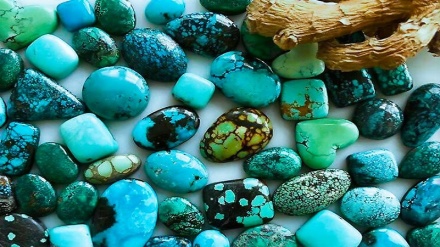Iranian Market (5)
Welcome to another episode of the series titled “Iranian Market”. This program takes a brief look at the most important goods produced in the precious land of Islamic Iran in the fields of agriculture, science and industry.
In this episode we give you a brief introduction of the Iranian carpet and the industry of carpet weaving.
The industry of carpet weaving in Iran is a mixture of art, creativity, collective effort and manifestation of Iran's national culture which has been shining over the art and culture of this ancient land.
Dr. Hossein Tajaddod, researcher and author of the precious Encyclopedia of Iranian carpet in the preface of his book writes: "From the very past, the has world recognized Iran by two lofty things; by its poetry and Its carpet. In other words, Iranians' aesthetic taste from the aspect of concept and face has been manifested in poetry and carpet respectively."
The Persian word Farsh which means carpet in English refers to any textile that spreads but by saying this word we usually mean rug or the heavy textile with manifold designs and colors made of silk, cotton or woolen strings.
The industry of carpet weaving is one of the oldest industries in Iran which has taken a growing path during the course of history.
Tourists and historians in their writings and notes have usually mentioned carpet weaving workshops in different regions of Iran including Azerbaijan, Fars, Khuzestan and Isfahan provinces.
Xenophon, ancient Greek historian and philosopher in his book titled "Cyropedia" or the "Education of Cyrus" notes that Iranians spread rugs beneath their feet in order to make a soft place for living.
Persian carpets and rugs of various types were woven in parallel by nomadic tribes, in village and town workshops. As such, they represent different, simultaneous lines of tradition, and reflect the history of Iran and its various peoples. The carpets woven in the Safavid court manufactories of Isfahan during the sixteenth century are famous for their elaborate colors and artistic design. These carpets are treasured in museums and private collections all over the world today.
According to historical accounts, the technique of carpet weaving was first invented by women and majority of carpet weavers during history have been women.
It is also said that the most ancient Persian carpet is the Pazyryk carpet which was discovered during excavations in the Pazyryk Valley of the Altai Mountains in Siberia in 1949.
According to historians this rug is also considered the oldest known carpet in the world. Its central field is a deep red color and it has two animal frieze borders proceeding in opposite directions accompanied by guard stripes. The inner main border depicts a procession of deer, the outer men on horses, and men leading horses.
AE/ME


